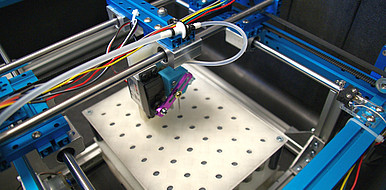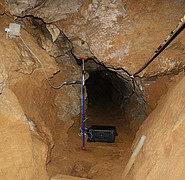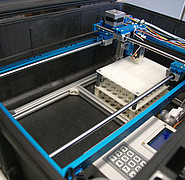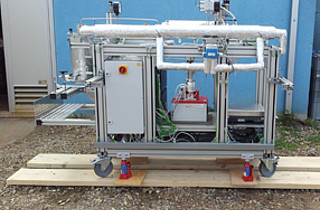A bright sample collector
Geological examinations form the foundations enabling an understanding of the Earth’s composition and changes in it. In addition to rock, seepage water dripping from stalactites below the ceiling of underground caves is of interest, too. The changing composition of the water demonstrates developments, and in tandem with the stalactites, it serves as a climate and environment archive.
State of the art
In order to establish such an archive, water samples are examined regularly and over a longer period. The samples have to stay unaltered until they undergo a laboratory analysis. There are hardly any solutions for automated sampling, so that as a rule, this must be carried out manually. Geologists work their way into the caves together with their equipment and take samples by hand. In these remote and often barely accessible places, long-term, regular sampling is difficult or even impossible.
Technology
Scientists at the KIT Institute of Applied Geosciences (AGW) recognised what was needed and developed a robot that independently conducts sampling once it has been adjusted for an operation. Water collected by the robot is filled into water- and airtight test tubes with an automatic catching and injecting device. This protects the samples e.g. from evaporation, gas exchange or contamination. A specially developed needle maintains a pressure balance during injecting. Depending on the respective interval between samples, the sampling vessels are accurately triggered and filled – up to 160 samples per operation.
Advantages
Accommodated in a special suitcase, the sample collector works reliably in damp, dirty environments and has a stand-alone power supply. This enables the system to stay at remote measuring points for longer periods and independently take samples. In between the individual samplings, the sample collector goes into sleep mode and is activated in time for the next sampling. After the last sample, the sampling vessels can be taken out, and the sample collector can be refilled with unused ones. Like with conventional methods, the samples are evaluated in the laboratory.
Options for companies
The Institute uses a prototype for long-term measurements of dripping water. The system could also be modified for other fluids and gases. KIT is looking for interested parties from the areas of hydrogeology, environmental science and water management who would like to apply the sample collector.
Your contact person for this offer

Innovation Manager New Materials, Climate and Environment Karlsruhe Institute of Technology (KIT)
Innovation and Relations Management (IRM) Phone: +49 721 608-26107
Email: jan-niklas.bloetz@kit.edu




